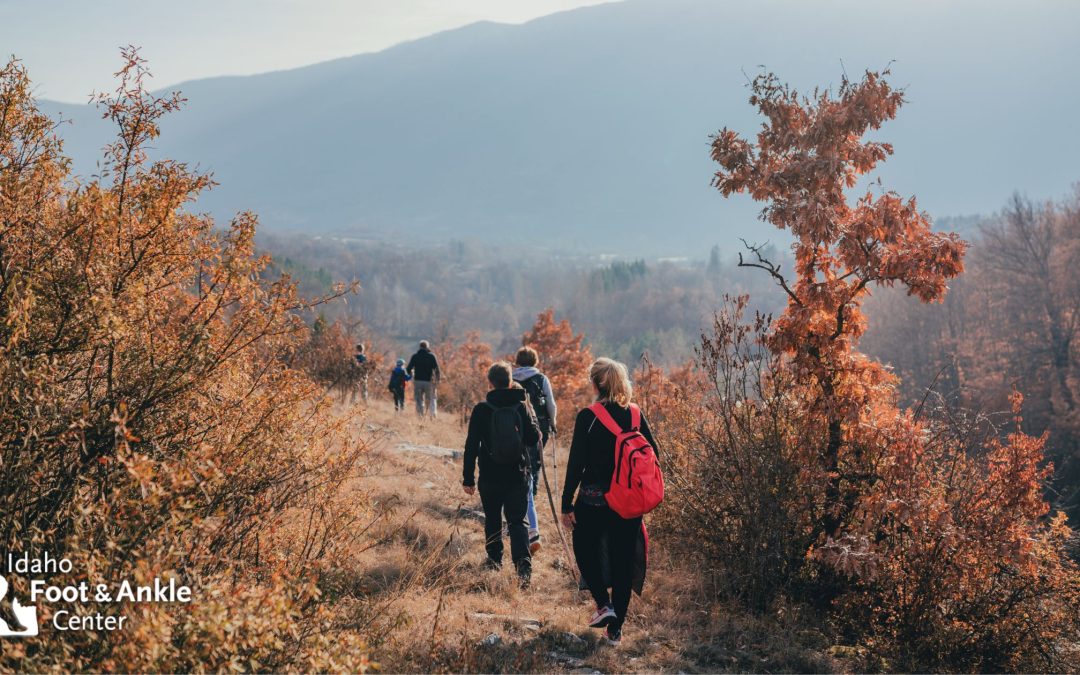Hiking is a fantastic outdoor activity that allows you to connect with nature, stay active, and clear your mind. However, it’s crucial to take good care of your feet and ankles while hitting the trails to ensure a safe and enjoyable experience. Here are some essential things you can do to help you avoid foot and ankle problems such as heel pain, ankle sprains, fractures, and Achilles tendon injuries when hiking or hunting in the mountains!
- Choose the Right Footwear: Your choice of hiking boots or shoes can make a significant difference in your foot and ankle health. Opt for footwear that offers proper arch support, cushioning, and a sturdy grip. Ensure a snug but not too tight fit, allowing room for your toes to wiggle and your feet to breathe. Don’t forget to break in your new hiking shoes before embarking on a long hike.
- Gradually Increase Hiking Intensity: If you’re new to hiking or planning an extended trek, it’s essential to build up your hiking endurance gradually. Start with shorter, less strenuous hikes and slowly increase the difficulty and duration of your hikes over time. This helps prevent overuse injuries and allows your feet and ankles to adapt to the demands of hiking.
- Maintain Proper Hydration: Staying hydrated is not only crucial for overall health but also for your feet and ankles. Dehydration can lead to muscle cramps and increase the risk of sprains and strains. Be sure to drink plenty of water during your hikes, especially in hot weather.
- Use Trekking Poles: Trekking poles can provide stability and reduce the strain on your feet and ankles, particularly when hiking on uneven terrain or steep slopes. They also help distribute the load more evenly, easing the pressure on your lower extremities.
- Stretch and Warm Up: Prior to starting your hike, it’s essential to warm up your muscles and stretch your calf muscles, Achilles tendons, and ankle joints. Gentle ankle circles, calf stretches, and toe-tapping exercises can help improve circulation and flexibility, reducing the risk of injuries.
- Monitor Your Footwear and Socks: During your hike, periodically check your socks and footwear for any discomfort or signs of blisters or hotspots. Carry blister prevention tools, like moleskin or blister pads, just in case. Wear socks that wick away moisture and protect from the cold. Moisture-wicking, breathable socks can also make a significant difference in preventing blisters.
- Rest and Elevate: If you start to feel any discomfort or fatigue in your feet and ankles, don’t hesitate to take short breaks to rest and elevate your legs. This can help reduce swelling and improve circulation.
- Pay Attention to Trail Conditions: Keep an eye on the trail conditions, as uneven terrain, rocks, and roots can increase the risk of twisted ankles and other injuries. Choose your route wisely and stay alert.
- Know Your Limits: Pushing yourself too hard can lead to foot and ankle injuries. Listen to your body and know when to call it a day. Overexertion can result in accidents and long-term damage.
- Post-Hike Care: After your hike, it’s important to take good care of your feet and ankles. Clean them, moisturize if needed, and inspect for any blisters or injuries. Proper post-hike care can help ensure a quick recovery. If you sustained an injury, contact Idaho Foot & Ankle Center for an evaluation. Many injuries need to be properly evaluated and treated as soon as possible. They can lead to serious problems and longer recovery times if left untreated.
By following these hiking tips with foot and ankle health in mind, you can enjoy the great outdoors while safeguarding your health. Remember that safety and comfort should always come first to make your hiking experiences as enjoyable as possible.
If you or your loved ones are experiencing any foot or ankle issues, contact Dr. Kylin Kovac, DPM, FACFAS, or Dr. Jed Erickson, DPM at Idaho Foot and & Ankle Center. With their specialized education, training, and experience in issues of the foot and ankle, they will find the right diagnosis and the right treatment plan for you to get you on the path to recovery as soon as possible. Idaho Foot & Ankle Center also offers in-house x-rays as well as many innovative treatments including MLS Laser Therapy to help you feel better faster! Foot pain is not normal, Dr. Kovac and Dr. Erickson are ready to help get you back to the activities you love!



Recent Comments